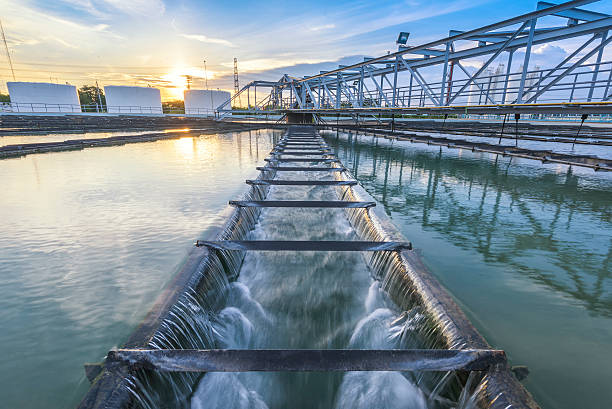Many filtration systems rely on water treatment polymer to enhance particle separation.
Many filtration systems rely on water treatment polymer to enhance particle separation.
Blog Article
The Value of Water Treatment Polymer in Modern Environmental Solutions
In today's context of rising environmental obstacles, the role of water therapy polymers has arised as a foundation of reliable water purification processes. The landscape is developing, and the effects for future water therapy practices necessitate a closer exam.

Duty of Water Treatment Polymers
Water therapy polymers play a critical function in improving the performance of water filtration processes. These synthetic organic substances work mainly as coagulants and flocculants, promoting the aggregation of put on hold bits and colloids in water. By advertising the formation of bigger collections, or flocs, these polymers dramatically improve the sedimentation price and filtration efficiency, leading to clearer and cleaner water.
Along with their coagulation and flocculation properties, water therapy polymers can likewise assist in the elimination of details pollutants, including heavy steels and organic pollutants. They attain this by altering the surface area characteristics of bits, which improves their interaction with other treatment chemicals. The use of polymers can minimize the quantity of chemical ingredients needed in therapy processes, thereby minimizing potential ecological influences.
Another vital element of water treatment polymers is their capacity to do efficiently throughout an array of conditions, consisting of differing pH levels and temperature levels. This adaptability makes them crucial in both community and commercial water therapy facilities. Inevitably, the role of water therapy polymers is important for guaranteeing conformity with environmental laws and achieving lasting water management methods.
Benefits of Polymer Usage
The application of polymers in water therapy procedures uses many advantages that enhance both operational performance and environmental sustainability. One considerable benefit is the raised performance in coagulation and flocculation, which causes boosted elimination of put on hold solids and pollutants from water sources. This efficiency not only leads to cleaner water but additionally decreases the requirement for excessive chemical ingredients, advertising a more environment-friendly strategy to water treatment.

Polymers also boost the stability of water treatment systems, enabling for more regular performance under differing operational problems. Their adaptability allows therapy facilities to adapt to different water top qualities and therapy goals, therefore making sure compliance with regulative standards.
Kinds of Water Therapy Polymers
Polymers utilized in water therapy can be classified into several kinds, each serving unique features and applications within the therapy procedure. The key classifications include coagulants, flocculants, and dispersants.
Coagulants, such as polyaluminum chloride and ferric sulfate, promote the gathering of suspended fragments in water by neutralizing their fees. This is vital for the elimination of turbidity and other pollutants. Flocculants, on the various other hand, advertise the formation of larger aggregates, or flocs, making it possible for simpler elimination of bits from water. Typical flocculants include polyacrylamide and cationic starches.
Dispersants are utilized to maintain suspensions and avoid the settling of solids (water treatment polymer). By customizing the surface area residential or commercial properties of bits, they enhance the performance of therapy procedures, especially in wastewater monitoring
In addition, there are specialized polymers developed for specific applications, such as biopolymers derived from natural resources, which often offer eco-friendly choices to artificial options. Selecting the ideal kind of polymer is important for optimizing water therapy processes, making sure reliable impurity elimination, and enhancing overall water quality.
Applications in Various Industries
In various industries, the application of water treatment polymers plays a significant duty in enhancing effectiveness and efficiency in handling water top quality. These polymers are used in local water therapy centers to help in coagulation and flocculation procedures, therefore boosting the removal of debris and impurities. In the oil and gas field, water treatment polymers aid in taking care of generated water, ensuring the risk-free disposal and recycling of water while decreasing environmental influence.
In addition, the fabric sector utilizes water therapy polymers to promote color removal and wastewater filtration, vital for fulfilling rigorous regulative requirements. water treatment polymer. In more information the food and beverage sector, these polymers are vital in making sure the security of water utilized in manufacturing processes, adding to product high quality and compliance with wellness guidelines
In addition, the mining industry gain from water therapy polymers, which are utilized to decrease water usage and boost the healing of valuable minerals from ore. In general, the versatility and performance of water treatment polymers throughout these diverse applications underscore their crucial role in promoting lasting practices and protecting water resources in contemporary commercial procedures.

Future Trends in Water Therapy
Emerging trends in water therapy are progressively defined by the assimilation of advanced technologies and cutting-edge products. water treatment polymer. The adoption of smart water administration systems, which make use of real-time information analytics and IoT tools, is revolutionizing the way water high quality is kept an eye on and handled. These systems allow early detection of impurities and maximize therapy procedures, leading to enhanced performance and minimized operational expenses
Furthermore, making use of water therapy polymers is getting grip as they use significant benefits in flocculation, sedimentation, and filtering procedures. These polymers promote the removal of toxins at lower does, thus decreasing chemical use and ecological impact. The advancement of naturally degradable and environmentally friendly polymers is also becoming an essential focus, straightening with global sustainability goals.
Furthermore, advancements in membrane innovation, such as nanofiltration and turn around osmosis, are improving the elimination of micropollutants and providing safe and clean water from unique resources, like seawater and wastewater. As regulative structures develop and public need for clean water intensifies, these trends are expected to form the future landscape of water treatment, advertising an extra lasting and resistant technique to water source monitoring.
Conclusion
To conclude, water treatment polymers are necessary elements in contemporary environmental solutions, substantially boosting water filtration processes through improved coagulation and flocculation. Their capacity read this article to lower chemical use while effectively removing impurities highlights their value in achieving regulatory conformity and browse around these guys sustainability goals. As industries continue to prioritize clean water access, the continuous growth and application of these polymers will certainly play a crucial role in resolving the difficulties of water treatment and environmental management in the future.
Report this page